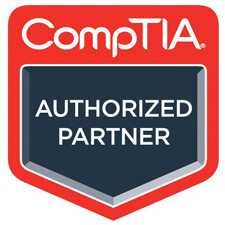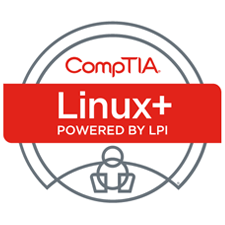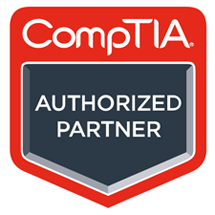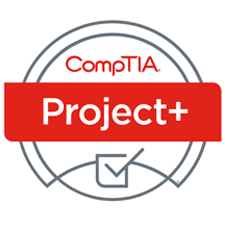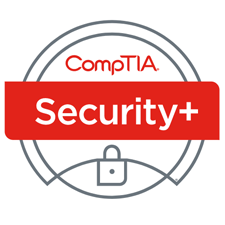IT Professional Boot Camp
IT Professional Bootcamp Certification Program Description
IT Professional Bootcamp Certification program that prepares individuals to manage the computer operations and control the system configurations emanating from a specific site or network hub. Includes instruction in computer hardware and software and applications; local area (LAN) and wide area (WAN) networking; principles of information systems security; disk space and traffic load monitoring; data backup; resource allocation; and setup and takedown procedures.
Income Expectation
$101,200/yr
The average salary for a IT Professional Bootcamp Certification is $101,200 in New York City. Salary estimates are provided by CompTIA.
IT Professional Bootcamp Certification Program Objectives
Identify basic network theory concepts and major network communications methods.
- Identify basic network theory concepts and major network communications methods.
- Describe bounded network media.
- Identify unbounded network media.
- Identify the major types of network implementations.
- Identify TCP/IP addressing and data delivery methods.
- Implement routing technologies.
- Identify the major services deployed on TCP/IP networks.
- Identify the infrastructure of a WAN implementation.
- Identify the components used in cloud computing and virtualization.
- Describe basic concepts related to network security.
- Prevent security breaches.
- Respond to security incidents.
- Identify the components of a remote network implementation.
- Identify the tools, methods, and techniques used in managing a network.
- Describe troubleshooting of issues on a network.
- Identify the hardware components of personal computers and mobile digital devices.
- Identify the basic components and functions of operating systems.
- Identify networking and security fundamentals.
- Identify the operational procedures that should be followed by professional PC technicians.
- Install, configure, and troubleshoot display devices.
- Install and configure peripheral components.
- Manage system components.
- Manage data storage.
- Install and configure Microsoft Windows.
- Optimize and maintain Microsoft Windows.
- Work with other operating systems.
- Identify the hardware and software requirements for client environment configurations.
- Identify network technologies.
- Install and configure networking capabilities.
- Support mobile digital devices.
- Support printers and multifunction devices.
- Identify security threats, vulnerabilities, and controls0.
- Implement security controls.
- Troubleshoot system-wide issues.
IT Professional Bootcamp Certification Program Outline
Hardware
BIOS
Networking
- Cables & Connectors
- Cable Characteristics.
- TCP/IP
- TCP/IP & UDP Ports
- WIFI Networking.
- SOHO Networking, Install and Configure.
- Connection Types
- Connection Devices.
- Networking Tools of the Trade.
Mobile Devices
- Laptop Hardware & Components
- Laptop Components
- Laptop Features.
- Other Mobile Devices: Tablets, Phones, etc.
- Accessories and Ports’
Hardware and Network Troubleshooting
- This objective covered in 1.0 above
- This objective covered in 1.0 above
- This objective covered in 1.0 above
- This objective covered in 2.0 above
- This objective covered in 1.0, 2.0, or 3.0 above.
- This objective covered in 1.0 above.
Windows Operating Systems
- Compare Operating Systems Windows Vista, 7, 8, & 8.1
- Operating System Installation
- Command Line Tools.
- OS Features and Tools.
- The Control Panel
- Install Networking on a Desktop.
- Preventative Maintenance and Tools
Other Operating Systems
- MAC OS and Linux
- Virtualization
- The Cloud
- Network Hosts
- Mobile Operating Systems: Android, IOS, etc.
- Install and Configure Mobile OS systems.
- Mobile Data synchronization
Security
- Common Threats and Vulnerabilities
- Prevention
- OS Security Settings.
- Deploy Security Best Practices per Workstation
- Securing the mobile device
- Data Disposal and Destruction
- Secure a SOHO wired and wireless network.
- Software Troubleshooting
- Operational Procedures.
Local Area Networks
- Topologies and the OSI Model
- Key Features of Networks
- Network Topologies
- The OSI Model
- Physical Layer
- Data Link Layer
- Network Layer
- Transport Layer
- Upper Layers
- OSI Model Summary
- Labs
- VM Orientation
- Ethernet
- Transmission Media
- Media Access Control
- Broadcast Domains
- Ethernet Frames
- Ethernet Deployment Standards
- MAC Addressing
- Address Resolution Protocol (ARP)
- Packet Sniffers
- Labs
- Configuring Ethernet Networking
- Hubs, Bridges, and Switches
- Hubs and Bridges
- Switches
- Switch Interface Configuration
- Spanning Tree Protocol (STP)
- Power over Ethernet (PoE)
- Infrastructure and Design
- Network Infrastructure Implementations
- Planning an Enterprise Campus Network
- Network Hierarchy and Distributed Switching
- Software Defined Networking
- Planning a SOHO Network
- TCP/IP Protocol Suite
- Policies and Best Practices
- Procedures and Standards
- Safety Procedures
- Incident Response Policies
- Security and Data Policies
- Password Policy
- Employee Policies
IP Addressing
- Internet Protocol
- IPv4
- IPv4 Address Structure
- Subnet Masks
- IP Routing Basics
- ipconfig / ifconfig
- ICMP and ping
- Labs
- Configuring IPv4 Networking
- IPv4 Addressing
- IPv4 Addressing Schemes
- Classful Addressing
- Public versus Private Addressing
- Subnetting and Classless Addressing
- Planning an IPv4 Addressing Scheme
- Public Internet Addressing
- Variable Length Subnet Masks (VLSM)
- Labs
- Configuring IPv4 Subnets
- IPv6 Addressing
- IPv6 Address Format
- IPv6 Addressing Schemes
- IPv6 Address Autoconfiguration
- Migrating to IPv6
- Labs
- Configuring IPv6 Networking DHCP and APIPA
- IPv4 Address Autoconfiguration
- Configuring DHCP
- DHCPv6
- Labs
- Configuring Address Autoconfiguration
Internetworking
- Routing
- Routing Basics
- Routing Algorithms and Metrics
- Dynamic Routing Protocols
- Administrative Distance and Route Redistribution
- IPv4 and IPv6 Internet Routing
- High Availability Routing
- Installing and Configuring Routers
- Routing Troubleshooting Tools
- Labs
- Configuring Routing TCP and UDP
- Transmission Control Protocol (TCP)
- User Datagram Protocol (UDP)
- TCP and UDP Ports
- Port Scanners
- Protocol Analyzers
- Labs
- TCP and Port Scanning Name Resolution and IPAM
- Host Names and FQDNs
- Domain Name System
- Configuring DNS Servers
- Resource Records
- Name Resolution Tools
- IP Address Management (IPAM)
- Labs Configuring Name Resolution and IPAM Monitoring and Scanning
- Performance Monitoring
- Network Monitoring Utilities
- Logs and Event Management
- Simple Network Management Protocol
- Analyzing Performance Metrics
- Patch Management
- Vulnerability Scanning
- Labs
- Performance Testing and Monitoring Network Troubleshooting
- Troubleshooting Procedures
- Identifying the Problem
- Establishing a Probable Cause
- Establishing a Plan of Action
- Troubleshooting Hardware Failure Issues
- Troubleshooting Addressing Issues
- Troubleshooting DHCP Issues
- Troubleshooting Name Resolution
- Troubleshooting Services
Applications and Security
- Applications and Services
- TCP/IP Services
- HTTP and Web Servers
- SSL / TLS and HTTPS
- Email (SMTP / POP / IMAP)
- Voice Services (VoIP and VTC)
- Real-time Services Protocols
- Quality of Service
- Traffic Shaping Bottlenecks and Load Balancing
- Multilayer Switches
- Labs
- Configuring Application Protocols
- Virtualization, SAN, and Cloud Services
- Virtualization Technologies
- Network Storage Types
- Fibre Channel and InfiniBand
- iSCSI
- Cloud Computing
- Configuring Cloud Connectivity
- Network Security Design
- Security Basics
- Common Networking Attacks
- Network Segmentation and DMZ
- Virtual LANs (VLAN)
- VLAN Trunks
- Network Address Translation (NAT)
- Device and Service Hardening
- Honeypots and Penetration Tests Network Security Appliances
- Basic Firewalls
- Stateful Firewalls
- Deploying a Firewall
- Configuring a Firewall
- Deploying a Proxy
- Intrusion Detection Systems (IDS)
- Denial of Service
- Labs
- Configuring a NAT Firewall
- Authentication and Endpoint Security
- Authentication and Access Controls
- Social Engineering
- Authentication Technologies
- PKI and Digital Certificates
- Local Authentication
- RADIUS and TACACS+
- Directory Services
- Endpoint Security
- Network Access Control
- Labs
- Secure Appliance Administration
Operations and Infrastructure
- Network Site Management
- Network Cabling Solutions
- Distribution Frames
- Change and Configuration Management
- Network Documentation and Diagrams
- Labeling Physical Security Devices
- Business Continuity and Disaster Recovery
- Network Link Management
- Power Management
- Backup Management
- Labs
- Network Inventory Management Installing Cabled Networks
- Twisted Pair Cable (UTP / STP / ScTP)
- Twisted Pair Connectors
- Wiring Tools and Techniques
- Cable Testing Tools
- Troubleshooting Wired Connectivity
- Other Copper Cable Types
- Fiber Optic Cable and Connectors
- Transceivers and Media Converters Installing Wireless Networks
- Wireless Standards (IEEE 802.11)
- Wireless Network Topologies
- Wireless Site Design
- Troubleshooting Wireless Connectivity
- Wireless Security
- Wi-Fi Authentication
- Extensible Authentication Protocol
- Troubleshooting Wireless Security
- Wireless Controllers Installing WAN Links
- Wide Area Networks (WAN)
- Telecommunications Networks
- Modern Telecommunications Networks
- Local Loop Services Installing WAN Links
- Wireless WAN Services
- Internet of Things Configuring Remote Access
- Remote Access Services (RAS)
- MPLS and PPP SIP Trunks
- Virtual Private Networks (VPN)
- SSL / TLS / DTLS VPNs
- IPsec Internet Key Exchange / ISAKMP
- Remote Access Servers
- Remote Administration Tools
- Managing Network Appliances
- Remote File Access
- Labs
- Configuring Secure Access Channels
- Configuring a Virtual Private Network
Introduction to Ethical Hacking & Footprinting and Reconnaissance
- Information Security Overview
- Information Security Threats and Attack Vectors
- Hacking Concepts
- Ethical Hacking Concepts
- Information Security Controls
- Penetration Testing Concepts
- Information Security Laws and Standards
- Footprinting Concepts
- Footprinting through Search Engines
- Footprinting through Web Services
- Footprinting through Social Networking Sites
- Website Footprinting
- Email Footprinting
- Competitive Intelligence
- Whois Footprinting
- DNS Footprinting
- Network Footprinting
- Footprinting through Social Engineering
- Footprinting Tools
- Footprinting Countermeasures
- Footprinting Penetration Testing
Scanning Networks & Enumeration
- Network Scanning Concepts
- Scanning Tools
- Scanning Techniques
- Scanning Beyond IDS and Firewall
- Banner Grabbing
- Draw Network Diagrams
- Scanning Pen Testing
- Enumeration Concepts
- NetBIOS Enumeration
- SNMP Enumeration
- LDAP Enumeration
- NTP Enumeration
- SMTP and DNS Enumeration
- Other Enumeration Techniques
- Enumeration Countermeasures
- Enumeration Pen Testing
Vulnerability Analysis & System Hacking
- Vulnerability Assessment Concepts
- Vulnerability Assessment Solutions
- Vulnerability Scoring Systems
- Vulnerability Assessment Tools
- Vulnerability Assessment Reports
- System Hacking Concepts
- Cracking Passwords
- Escalating Privileges
- Executing Applications
- Hiding Files
- Covering Tracks
- Penetration Testing
Malware Threats & Sniffing
- Malware Concepts
- Trojan Concepts
- Virus and Worm Concepts
- Malware Analysis
- Countermeasures
- Anti-Malware Software
- Malware Penetration Testing
- Sniffing Concepts
- Sniffing Technique: MAC Attacks
- Sniffing Technique: DHCP Attacks
- Sniffing Technique: ARP Poisoning
- Sniffing Technique: Spoofing Attacks
- Sniffing Technique: DNS Poisoning
- Sniffing Tools
- Countermeasures
- Sniffing Detection Techniques
- Sniffing Pen Testing
Social Engineering & Denial-of-Service
- Social Engineering Concepts
- Social Engineering Techniques
- Insider Threats
- Impersonation on Social Networking Sites
- Identity Theft
- Countermeasures
- Social Engineering Pen Testing
- DoS/DDoS Concepts
- DoS/DDoS Attack Techniques
- Botnets
- DDoS Case Study
- DoS/DDoS Attack Tools
- Countermeasures
- DoS/DDoS Protection Tools
- DoS/DDoS Penetration Testing
Certification Exam
CompTIA A+ Certification 220-1001/220-1002
CompTIA Network+ Certification N10-007
CompTIA Security+ Certification SYO-501
120 Hour Program
SCHEDULE DATES - 105 Hour Hands-On Program
IT Professional Bootcamp
9AM-2PM (Wed-Thurs)
Start Date & Graduation Date
11/24/2021 to 01/26/2022
2 Days (10 Hours) a Week for 11 Weeks
|
||||
IT Professional Bootcamp
9AM-2PM (Mon-Tue)
Start Date & Graduation Date
01/17/2022 to 03/28/2022
2 Days (10 Hours) a Week for 11 Weeks
|
||||
IT Professional Bootcamp
10AM-3PM (Weekends)
Start Date & Graduation Date
12/04/2021 to 02/27/2022
2 Days (10 Hours) a Week for 11 Weeks
|
||||
IT Professional Bootcamp
10AM-3PM (Weekends)
Start Date & Graduation Date
02/05/2022 to 04/17/2022
2 Days (10 Hours) a Week for 11 Weeks
|
||||
IT Professional Bootcamp
9AM-5PM (M-F)
Start Date & Graduation Date
03/07/2022 to 03/25/2022
5 Days (35 Hours) a Week for 3 Weeks
|
||||
IT Professional Bootcamp
9AM-2PM (Wed-Thurs) |
Start Date
Graduation Date |
11/24/2021
01/26/2022 |
2 Days (10 Hours) a Week for 11 Weeks | |
IT Professional Bootcamp
9AM-2PM (Mon-Tue) |
Start Date
Graduation Date |
01/17/2022
03/28/2022 |
2 Days (10 Hours) a Week for 11 Weeks | |
IT Professional Bootcamp
10AM-3PM (Weekends) |
Start Date
Graduation Date |
12/04/2021
02/27/2022 |
2 Days (10 Hours) a Week for 11 Weeks | |
IT Professional Bootcamp
10AM-3PM (Weekends) |
Start Date
Graduation Date |
02/05/2022
04/17/2022 |
2 Days (10 Hours) a Week for 11 Weeks | |
IT Professional Bootcamp
9AM-5PM (M-F) |
Start Date
Graduation Date |
03/07/2022
03/25/2022 |
5 Days (35 Hours) a Week for 3 Weeks | |
- CompTIA
- CISCO
- EC-Council
As an authorized CompTIA partner, Institute of Information Technology offers up-to-date CompTIA training and certification courses. A CompTIA certification is an international industry credential.
- CompTIA A+
- CompTIA Network+
- CompTIA A+ and Network+ Boot Camp
- IT Professional Bootcamp
- CompTIA Security+
- CompTIA Server+
- CompTIA Project+
- CompTIA Cybersecurity Analyst (CySA+)
- CompTIA Train The Trainer (CTT+)
- CompTIA Cloud+ Training
- CompTIA PenTest+ Certification Training
- CompTIA CDIA+
- CompTIA Linux+ Powered by LPI
- CompTIA Advanced Security Practitioner (CASP) Training
- Network and System Administrator
- Computer Support Specialist
- Computer Systems Networking and Telecommunications Specialist
- Network and System Administrator Manager
- Computer Support Aadministrator
- Computer And Information Systems Security Analyst
- Computer Systems Networking and Telecommunications Administrator
- Computer Systems Networking And Telecommunications Manager
- Network And System Administrator Manager Professional
Institute of Information Technology is honored to be an authorized CISCO Network Academy Training Institute. CISCO is the worldwide leader in networking. CISCO has shaped the future of the internet by transforming how people connect, communicate and collaborate.
- CISCO MASTER
- Interconnecting Cisco Networking Devices, Part 1 - ICND1
- Interconnecting Cisco Networking Devices, Part 2 - ICND2
- CCNA Routing and Switching
- CCNP Routing and Switching
- CISCO-Individualized CCNA Routing and Switching
- CCNA Security
- CCNP Security
- CCNA Collaboration
- CCNP Collaboration
- CCNA Service Provider
- CCNP Service Provider
- Implementing Cisco Collaboration Devices
- Implementing Cisco Video Network Devices
- Troubleshooting Cisco IP Telephony & Video
- Implementing Cisco Collaboration Application
- Implementing Cisco IP Telephony & Video, Part 1
- Implementing Cisco IP Telephony & Video, Part 2
Institute of Information Technology has the honor of being an authorized EC-Council Accredited Training Center. EC-Council is the worldwide leader in Cyber Security course content. EC-Council has changed the future of the internet by transforming how people deal with and prevent cyberattack.
- Hacking Apprentice
- Hacking Professional
- Cybersecurity Master
- Hacking Master
- Certified Ethical Hacker Training Program C| EH
- Certified Ethical Hacker Practical C| EH
- Certified Network Defender Certification C| ND
- Licensed Penetration Tester Master L| PT (Master)
- Computer Hacking Forensic Investigator Certification C| HFI
- EC-Council Certified Security Analyst (ECSA) Penetration Testing
- Certified Secure Computer User C| SCU
- Certified Network Defense Architect C| NDA
- Project Management in IT Security P| MIT
- EC-Council Network Security Administrator E| NSA
- Certified Cyber Marketing Professional C| CMP
- EC- Council Certified Incident Handler Program E| CIH
- EC-Council Certified Security Specialist E| CSS
- EC-Council Certified Secure Programmer .NET E| CSP
- EC-Council Certified Disaster Recovery E| CDR
- Virtualization Technology Professional E| CVT
- EC-Council Certified Encryption Specialist E| CES
- EC-COUNCIL DISASTER RECOVERY PROFESSIONAL E| DRP
- Advanced Network Defense (CAST 614)
- Certified Application Security Engineer (CASE)
- Cyber Security Boot Camp
